Buongiorno and welcome to RomeCabs Rome Travel Blog! Rome, the Eternal City, is a treasure trove of history, culture, and culinary delights. Whether you’re gazing upon ancient ruins, wandering through picturesque streets, or indulging in exquisite Italian cuisine, if you are a first-time visitor to Rome, your trip is bound to be unforgettable. To ensure a smooth and enjoyable journey, here are some comprehensive travel tips for first-time visitors to Rome, covering everything from planning your trip to understanding local customs and staying safe.
.
Tips for a Perfect Trip for First-Time Visitors to Rome
.
Planning a trip to Rome involves a balance of organization and flexibility. With its wealth of attractions and activities, a little forethought can make your visit seamless and unforgettable. Here’s an expanded guide to help you plan the perfect first trip to Rome.
.
Plan your Trip: Identify Must-See Sites in Rome
.
Rome is home to an array of iconic landmarks and historical sites. Key places to include in your itinerary are:
The Colosseum: First-time visitors to Rome hail the Colosseum top on their “bucket list”. This ancient amphitheater is a must-see for its grandeur and historical significance. To make the most of your visit, consider booking a guided tour. This not only allows you to skip the often long lines but also provides deeper insights into the history and architecture of the Colosseum. Tours often include access to the Roman Forum and Palatine Hill, giving you a comprehensive understanding of ancient Rome.
.
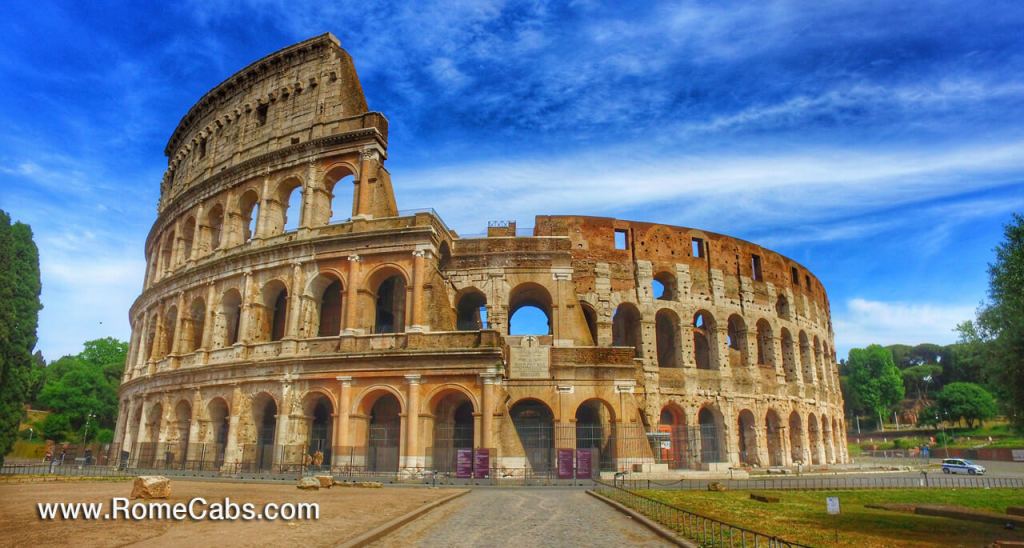
.
The Roman Forum: Once the heart of ancient Rome, this site offers a fascinating glimpse into the city’s history. Walking through the ruins of temples, basilicas, and public spaces, you can almost feel the pulse of ancient Roman life. A guided tour can enhance your understanding of the historical and cultural significance of the various ruins.
The Pantheon: An architectural marvel, this ancient temple turned church is one of the best-preserved buildings of ancient Rome. Its impressive dome and the oculus at the center are architectural feats that continue to inspire awe. Admission tickets are required and cost around 5 Euros per person. Tickets can be booked online in advance for specific time slots or purchased on-site, though long ticket lines are to be expected. Consider visiting early in the day to avoid the busiest times.
.

.
Vatican City: Another favorite for first-time visitors to Rome is the Vatican. Home to St. Peter’s Basilica, the Vatican Museums, and the Sistine Chapel, Vatican City is a treasure trove of art and history. Advance booking is highly recommended due to the popularity of these sites. Early morning or late afternoon slots can help you avoid the peak crowds. Additionally, consider a guided tour for a more informative and enriching experience.
Most Famous Squares: Must See for first-time visitors to Rome
Trevi Fountain: A trip to Rome wouldn’t be complete without visiting the Trevi Fountain. Make sure to toss a coin over your shoulder into the fountain to ensure your return to Rome. Visiting early in the morning or late at night can provide a more tranquil experience.
Piazza Navona: This beautiful square, built on the site of an ancient stadium, is perfect for a leisurely stroll. It’s surrounded by Baroque architecture, fountains, and cafes, making it an ideal spot to soak in the Roman atmosphere.
Spanish Steps: Climb the iconic Spanish Steps for a beautiful view of the surrounding area. The steps are a popular gathering spot for both tourists and locals. The nearby Piazza di Spagna and the Keats-Shelley Memorial House are also worth a visit.
.
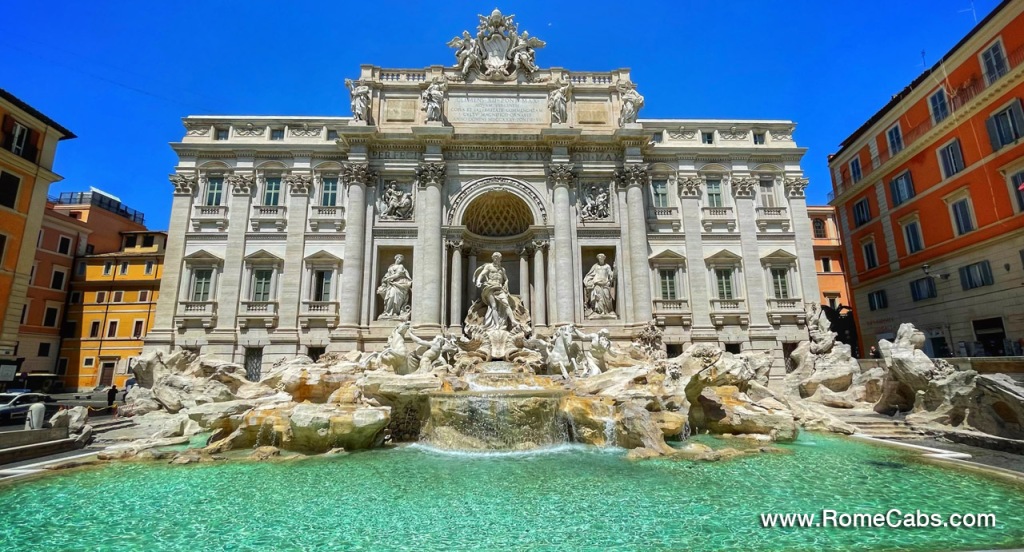
.
.
Book your Admission Tickets in Advance
Booking tickets in advance for popular attractions can save you time and hassle. Many sites offer skip-the-line tickets, which are invaluable during peak tourist seasons. Consider also booking tours that combine multiple sites for a more comprehensive experience.
.
Optimize Your Rome Trip Itinerary
.
To make the most of your time in Rome, prioritize the key sites and allow for flexibility in your schedule. Consider the following tips:
Plan Around Peak Times: Major attractions can get very crowded, especially during peak tourist seasons. Visit popular sites early in the morning or late in the afternoon to avoid the biggest crowds.
Allocate Time for Exploration: Rome’s charm often lies in its unexpected discoveries. Allocate time in your itinerary to wander the streets, explore hidden alleys, and stumble upon lesser-known churches, fountains, and piazzas.
Mix Major Sites with Relaxation: Balance your itinerary by mixing visits to major attractions with downtime. Enjoying a leisurely meal at a local trattoria, sipping coffee at a café, or relaxing in one of Rome’s beautiful parks can provide a pleasant break from sightseeing.
Check Local Events: Look up any local festivals, holidays, or events happening during your visit. Participating in local events can provide a unique cultural experience.
Stay Informed: Stay updated on any travel advisories, local news, and weather forecasts for Rome. This can help you prepare for any unexpected changes.
By planning carefully and allowing room for spontaneity, you can ensure that your trip to Rome is both well-organized and full of delightful surprises.
.

.
.
Book Your Accommodation in Rome
.
Choose the Right Neighborhood in Rome
.
First-time visitors to Rome may not think that choosing the right neighborhood in Rome matters, but it does! When selecting accommodation in Rome, it’s crucial to consider your proximity to major attractions and access to public transportation. Here are some recommended neighborhoods to enhance your stay:
Trastevere: This charming district is renowned for its lively atmosphere, cobblestone streets, and exceptional dining options. Staying in Trastevere allows you to immerse yourself in the local nightlife and experience the authentic Roman way of life. With its bohemian vibe and picturesque alleys, it’s perfect for those who enjoy exploring on foot.
Centro Storico: For first-time visitors to Rome staying in the center is most convenient option. As the historic center of Rome, Centro Storico places you within walking distance of iconic landmarks like the Pantheon, Trevi Fountain, and Piazza Navona. This area is ideal for travelers who want to be in the heart of the action, surrounded by historical sites, museums, and vibrant squares.
Monti: A trendy neighborhood that offers a blend of old and new Rome. Monti is dotted with hip cafes, boutique shops, and historical sites such as the Basilica of Santa Maria Maggiore. Its central location and eclectic mix of attractions make it a popular choice for those seeking a balance between sightseeing and enjoying modern Roman culture.
Vatican City Area: If visiting the Vatican Museums, St. Peter’s Basilica, and the Sistine Chapel is high on your list, consider staying in the Prati neighborhood. This area provides a quieter atmosphere compared to the bustling city center and has a range of accommodation options, from luxury hotels to budget-friendly B&Bs.
.
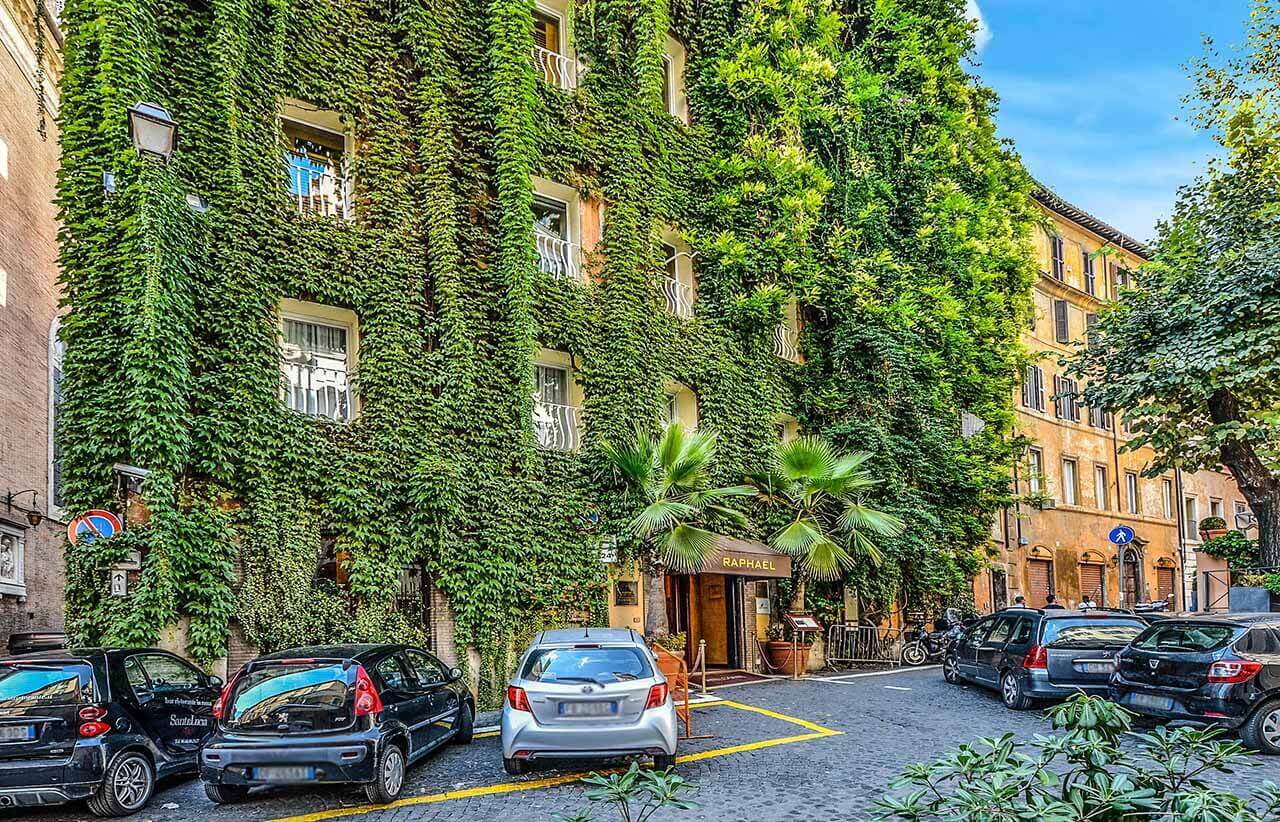
.
.
Tips for booking your accommodation in Rome
To secure the best options at competitive prices, it’s advisable to book your accommodation well in advance, especially during peak tourist seasons such as spring, summer, and early fall. Look for accommodations that offer easy access to transportation hubs and major attractions to maximize your convenience and minimize travel time.
When choosing where to stay, consider your travel preferences and priorities. Whether you prefer the vibrant streets of Trastevere, the historic charm of Centro Storico, the trendy vibe of Monti, each neighborhood offers a unique experience that can enhance your visit to Rome.
Staying close to Metro Stops and walking distance to the attractions on your must-see list, will ensure easier access to key areas in Rome.
.
Transportation in Rome
.
Rome Public Transportation
First-time visitors to Rome should become familiar with Rome’s public transportation system before their trip. Public Transportation in Rome includes buses, trams, and the metro, is generally efficient but can be slow and crowded, especially during peak hours. To make the most of it, familiarize yourself with the routes and schedules before you travel.
The metro in Rome is often the fastest option, with currently two main lines (A and B) that intersect at Termini Station, making it easy to navigate key areas of the city. Buses and trams cover extensive routes and can take you to places that the metro does not reach, but they tend to be less reliable due to traffic congestion. Purchase tickets at metro stations, newsstands, or tobacco shops (Tabacchi), and remember to validate your ticket before boarding.
.
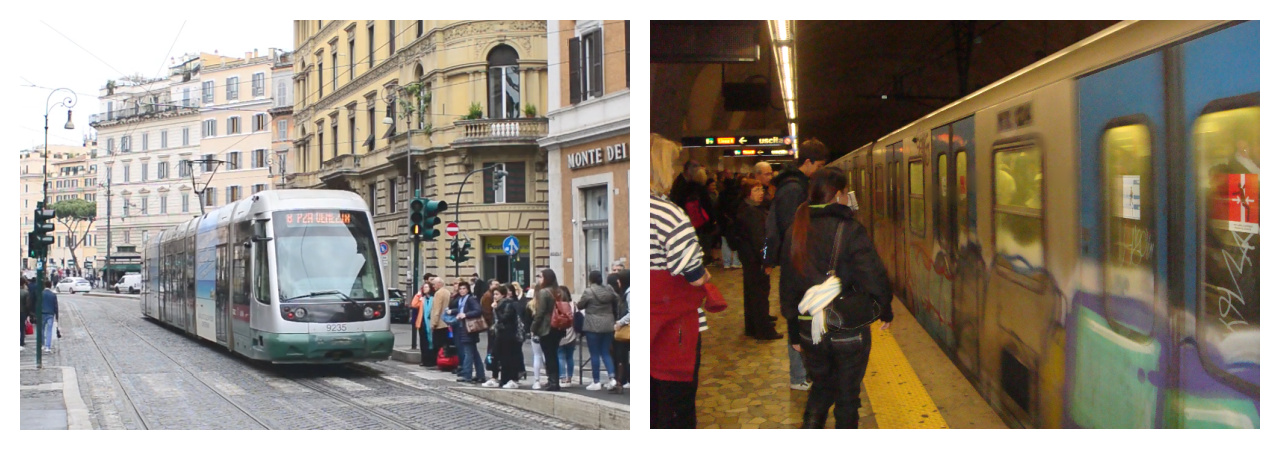
.
Rome Private Transfers
For essential transportation needs such as Rome airport transfers and Civitavecchia transfers, booking private services like RomeCabs provides a stress-free solution. This is particularly convenient for first-time visitors to Rome and not familiar with the city or transportation options, traveling with luggage or prefer door-to-door service.
RomeCabs offers personalized and reliable transport, ensuring you reach your destination comfortably. Moreover, they provide customized tours by car, allowing you to explore Rome and its surroundings at your own pace, with the added benefit of a knowledgeable driver.
.

.
.
Rome Taxis and Uber
Taxis in Rome are an option but can be unreliable during busy periods, especially from the airport. They are typically small, white economy-sized cars, suitable for 2-3 passengers with limited luggage space. It’s important to use official taxis to avoid scams; these are recognizable by their white color and taxi sign on the roof. Taxis are found at taxi stands or dispatched by phone.
In Rome taxis CANNOT be hailed on the street. Keep in mind that finding a taxi during peak hours or bad weather can be challenging.
.
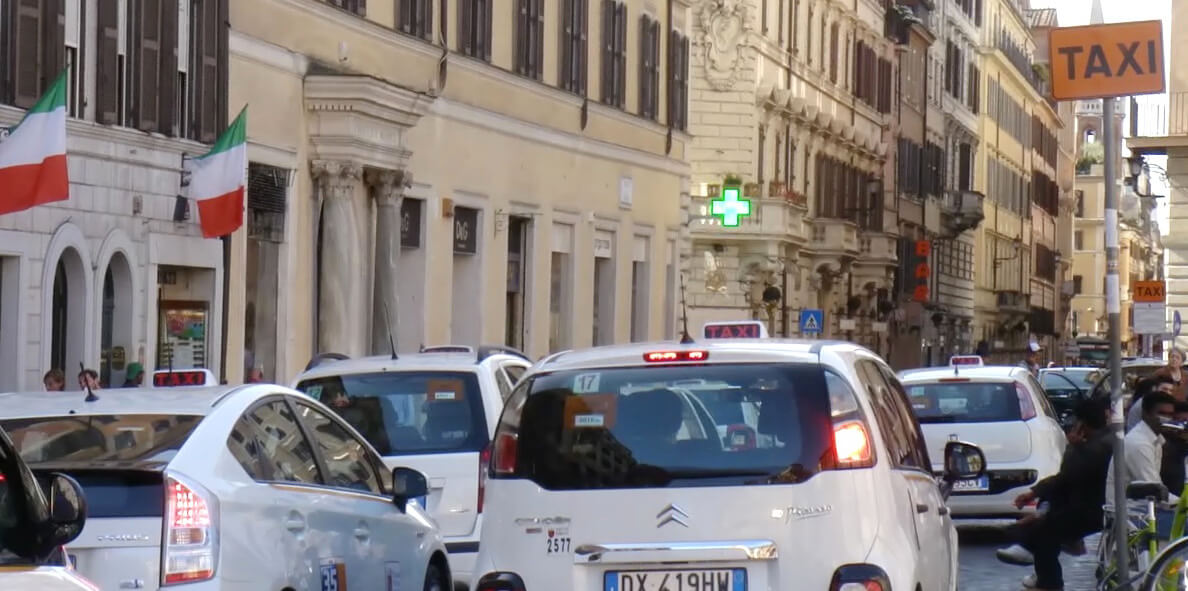
.
Uber operates in Rome, but its availability is limited. The service does not have fixed rates and prices can surge dramatically, but Uber offers the advantage of knowing the prices before you request an Uber driver and offers the convenience and the ability to book through the app. UberBLACK is the most common service, providing high-end vehicles for a more comfortable ride. It’s a reliable alternative when taxis are scarce but be prepared for potentially higher costs.
Whether you choose public transport, private transfers, taxis, or Uber, planning ahead is key to a smooth experience in Rome. Use public transportation for daily commuting within the city and private transfers for stress-free travel to and from the airport or port. Taxis and Uber can fill in the gaps when needed but be mindful of availability and costs. By understanding your options and planning accordingly, you can navigate Rome efficiently and enjoy your trip without unnecessary stress.
.
Packing Tips for first time visitors and What to Bring to Rome
.
When packing for Rome, it’s important to consider both comfort and practicality to ensure you make the most of your trip. First-time visitors to Rome may not be aware that comfort should be prioritized over fashion statements.
.

.
.
Comfortable Walking Shoes: Comfortable walking shoes are a must since Rome is best explored on foot. The city’s cobblestone streets can be tough on your feet, so opt for sturdy, comfortable shoes that provide good support.
Reusable Water Bottle: A reusable water bottle is incredibly convenient. Rome’s public drinking fountains, known as “nasoni,” offer fresh, free water, making it easy to stay hydrated without constantly buying bottled water.
Modest Clothing: Italy has a modest dress code for churches. Pack clothing that covers your shoulders and knees for visiting religious sites.
Euros: When it comes to currency, it’s wise to purchase Euros from your local bank or financial institution before your trip to take advantage of favorable exchange rates. Alternatively, you can use ATMs inside Fiumicino (FCO) Airport upon arrival for a safe option.
Prescription Medicine: enough prescription medicine to last the entire duration of your trip, with a bit extra just in case of delays. It’s also helpful to bring your preferred over-the-counter medications, as finding specific brands abroad can be challenging.
Preferred Over-the-Counter Medicine: Stock up on any OTC medications you regularly use.
Mobile Devices and Chargers: Ensure your devices are charged and pack a converter suitable for Italy. A portable battery charger is also useful for charging your devices on the go.
Earbuds and Eye Mask: For a restful sleep, especially if you’re staying in a bustling area, bring earbuds and an eye mask. These can help block out noise and light, ensuring you get the rest you need.
Copies of Your Travel Documents: Keep photocopies of your passport, travel insurance, and other important documents separate from the originals. This precaution can be invaluable in case of loss or theft, helping you to replace them more easily.
.
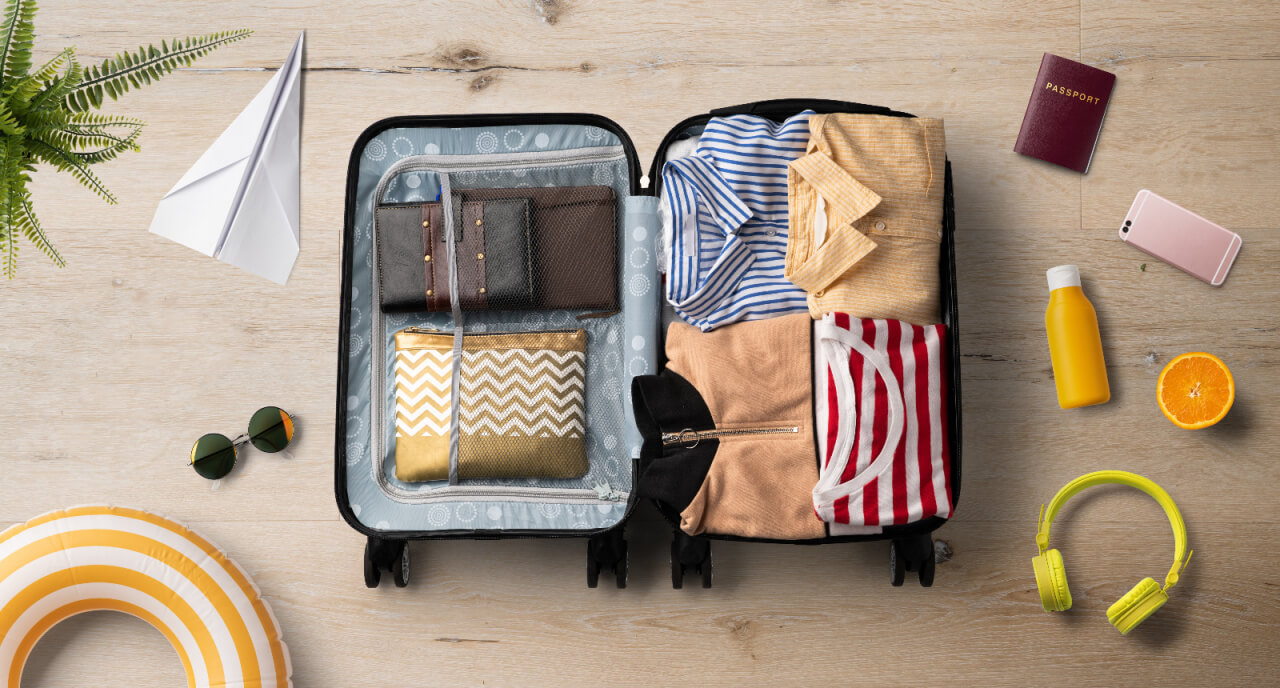
.
.
Best Times to Visit Rome: by the Seasons
.
Rome, with its timeless allure, is a year-round destination, but each season offers a unique experience. Here’s a detailed guide on what to expect during each season, helping you decide the best time for your visit.
.
Spring in Rome (March to May)
.
Weather and Atmosphere in Rome in the Spring
Spring is arguably the best time to visit Rome. The weather is mild and pleasant, with temperatures ranging from 50°F to 75°F, making it perfect for outdoor exploration. The city awakens from its winter slumber, and the air is filled with the fragrance of blooming flowers. Rome’s parks and gardens, like the Villa Borghese and the Orange Garden on Aventine Hill, are particularly beautiful during this season. The combination of clear skies and vibrant flora creates a sense of renewal and liveliness throughout the city.
.
.
.
.
Key Events and Activities in Rome in the Spring
.
One of the highlights of spring in Rome is the Easter celebrations. Easter is a significant event, especially in Vatican City. The Pope’s Easter Mass at St. Peter’s Basilica attracts thousands of pilgrims from around the world. The city is alive with religious processions, special church services, and festive decorations. If you plan to visit during this time, booking accommodations and tickets well in advance is crucial, as the city experiences a surge in visitors.
In addition to Easter, another notable event is Rome’s birthday, known as Natale di Roma, celebrated on April 21st. This ancient tradition includes historical reenactments, parades, and fireworks, offering a unique glimpse into Rome’s rich history and cultural heritage.
May brings the annual display of azaleas on the Spanish Steps, transforming this iconic location into a stunning sea of pink and white flowers. It’s a favorite spot for both locals and tourists, providing a picturesque setting for photos and a relaxing place to enjoy the spring weather.
.
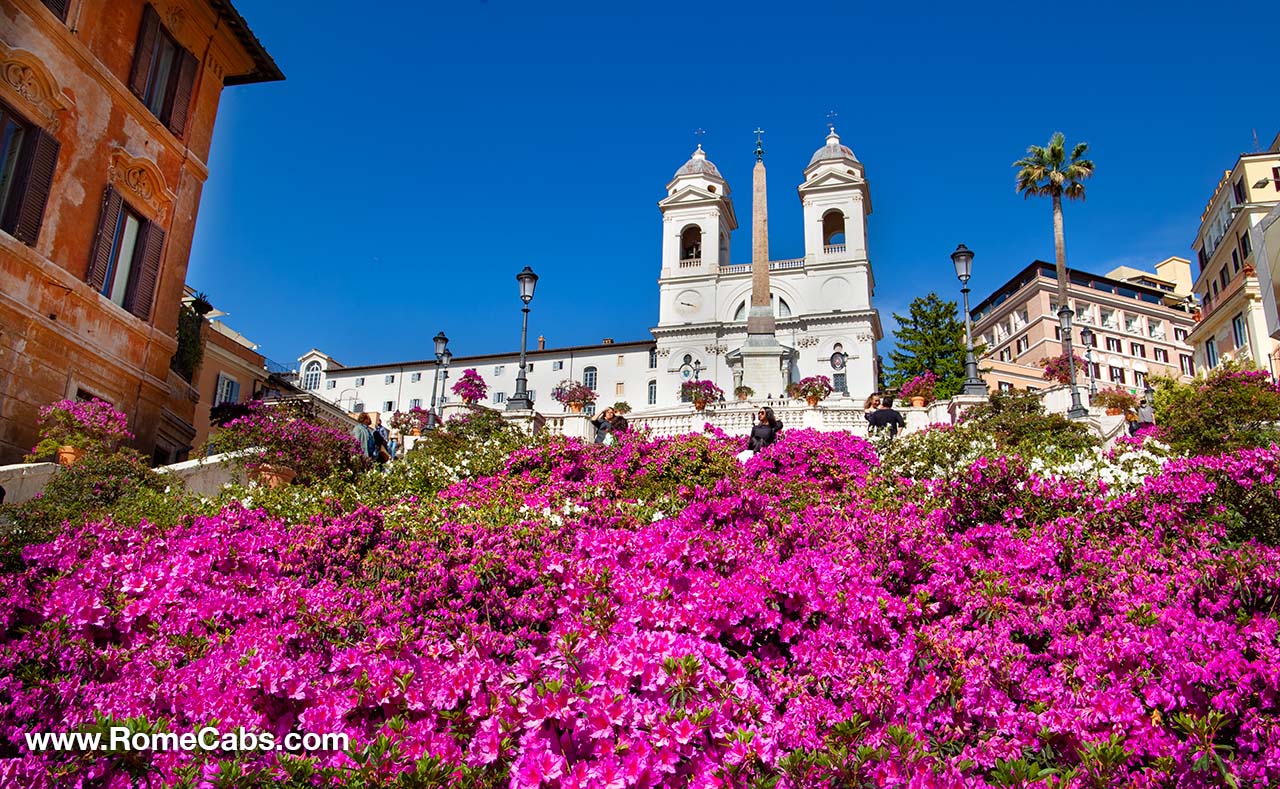
.
Outdoor dining becomes a prominent feature of Roman life in the spring. The city’s numerous cafes and terraces are bustling with activity as locals and tourists alike enjoy al fresco dining. Charming squares like Piazza Navona and Campo de’ Fiori are perfect for sipping espresso or indulging in gelato while soaking in the vibrant atmosphere. The mild evenings are ideal for leisurely dinners, allowing you to fully experience the culinary delights of Rome.
.
Tips for Visiting Rome in the spring
.
While spring is a delightful time to visit Rome, it’s also one of the most popular seasons for tourists. The influx of visitors, especially around Easter, means that major attractions can become quite crowded. To make the most of your visit, try to explore popular sites early in the morning or later in the afternoon when the crowds are thinner. This strategy not only helps you avoid long lines but also allows for a more relaxed and enjoyable experience.
When packing for your trip, consider the variable spring weather. Layered clothing is essential to adapt to the fluctuating temperatures. A light jacket or sweater is handy for cooler mornings and evenings, while lighter attire will keep you comfortable during the warmer afternoons. Comfortable walking shoes are a must, as Rome’s cobblestone streets and numerous historic sites are best explored on foot.
Lastly, spring is an excellent time to take advantage of Rome’s outdoor markets. Markets such as Campo de’ Fiori offer a vibrant array of fresh produce, flowers, and local delicacies. Strolling through these markets provides a wonderful opportunity to immerse yourself in the local culture and perhaps pick up some unique souvenirs.
Spring in Rome is a season of beauty, renewal, and vibrant cultural experiences. With pleasant weather, blooming flowers, and a host of special events, it’s the perfect time to explore the Eternal City. By planning ahead and embracing the lively atmosphere, you’re sure to have an unforgettable visit.
.
Summer Trip to Rome (June to August)
.
Weather and Atmosphere of Summer in Rome
First-time visitors to Rome may not be aware of just how hot it gets in Rome in the summer. Summer in Rome is characterized by high temperatures and a bustling atmosphere. The mercury often rises above 90-95°F (32-35°C), making it one of the hottest periods of the year. This season also coincides with the peak tourist influx, resulting in crowded streets, busy attractions, and a lively, yet sometimes overwhelming, urban environment. The combination of intense heat and large numbers of visitors requires thoughtful planning to fully enjoy the city’s offerings.
.
Summer Heat and Crowds in Rome
Given the high temperatures, it’s essential to strategize your daily activities to avoid the midday heat. Planning your sightseeing for early mornings or late evenings can help you enjoy Rome’s landmarks in relative comfort. Mornings offer cooler temperatures and fewer crowds, making it an ideal time to visit major sites like the Colosseum, Vatican Museums, and the Roman Forum.
As the day progresses and the heat intensifies, seeking refuge indoors is a wise move. Rome’s numerous museums, such as the Capitoline Museums and the Borghese Gallery, provide air-conditioned havens filled with art and history.
Hydration is crucial during the summer months. Carry a reusable water bottle to take advantage of the city’s numerous public drinking fountains, known as “nasoni“. These fountains dispense cool, fresh water and are scattered throughout the city, providing a convenient way to stay hydrated without having to purchase bottled water.
Sun protection is another important consideration. The strong summer sun can lead to sunburn and heat exhaustion if proper precautions aren’t taken. Wearing sunscreen, a hat, and sunglasses, and carrying a small portable fan can help mitigate the effects of the heat.
.
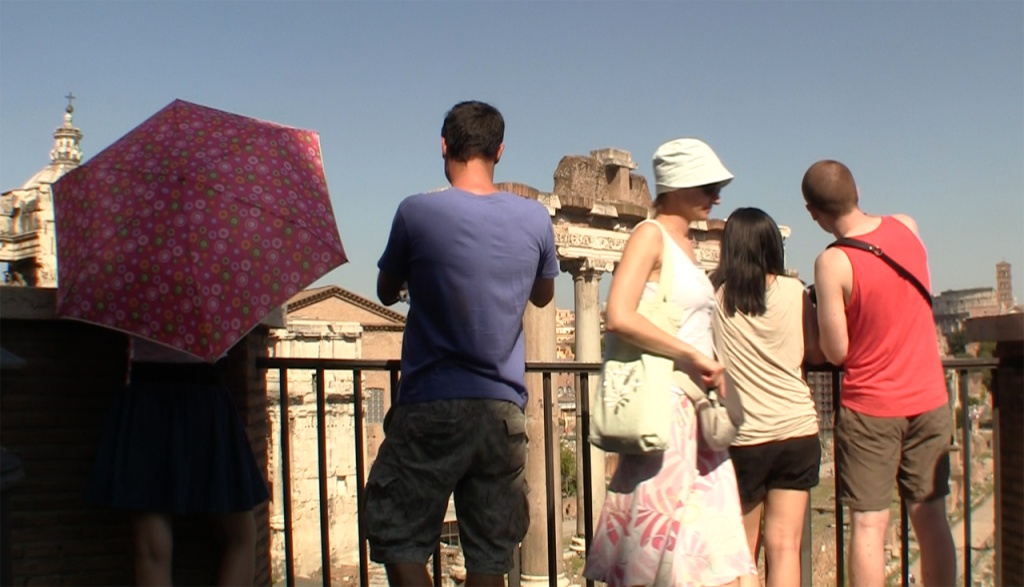
.
.
Cultural Events and Festivals in Rome in the summer
.
Despite the heat, summer in Rome is vibrant with cultural events and festivals that add a festive touch to the city’s atmosphere. One of the highlights is “Estate Romana“, Rome’s summer festival, which runs from June through September. This festival features a variety of cultural events, including concerts, outdoor cinema screenings, theatrical performances, and art exhibitions. Many of these events take place along the Tiber River and in public squares, creating a dynamic cultural landscape.
The banks of the Tiber River come alive during the summer months with pop-up bars, restaurants, and shops, contributing to a festive atmosphere. These temporary establishments offer a great place to unwind in the evening, enjoying cool river breezes and panoramic views. The lively scene along the Tiber is perfect for sampling local food, sipping cocktails, and mingling with both locals and tourists.
Summer evenings in Rome are perfect for al fresco dining. Restaurants set up tables outdoors, and the city’s piazzas become lively gathering spots for dinner and socializing. Areas like Trastevere and Campo de’ Fiori are particularly popular, offering a wide range of dining options from traditional trattorias to modern eateries. The warm evenings are also ideal for enjoying gelato as you stroll through the city’s historic streets, taking in the illuminated architecture and vibrant nightlife.
.
Tips for visiting Rome in the summer
.
Due to the high volume of tourists, advance booking is highly recommended for hotels, tours, transfers, and admission tickets to popular attractions. Securing reservations ahead of time not only guarantees your spot but also allows for a smoother and more organized visit. Sites like the Colosseum, the Vatican Museums, and the Pantheon often sell out quickly, so planning your itinerary and making reservations early is essential.
To make the most of your summer trip to Rome, balance your outdoor sightseeing with indoor activities to manage the heat. Wear lightweight, breathable clothing to stay cool, and always carry water and sun protection. Embrace the slower pace of the Italian lifestyle with leisurely lunches, afternoon siestas, and evening strolls.
While summer in Rome can be intense, the season’s vibrant cultural scene and the city’s historic beauty make it a rewarding time to visit. With careful planning and a bit of flexibility, you can enjoy the best of what Rome has to offer, even during the hottest months.
.
Autumn Trip to Rome (September to November)
.
Weather and Atmosphere in Rome in the Autumn
.
Autumn in Rome is a beautiful and comfortable season to visit. Temperatures are mild, ranging from 55°F to 75°F (13°C to 24°C), creating a pleasant environment for outdoor activities. As the intense heat of summer wanes and the crowds begin to thin, the city takes on a more relaxed and inviting ambiance.
The parks and gardens throughout Rome, such as the Villa Borghese and the Botanical Garden, are adorned with vibrant autumn foliage, offering a picturesque backdrop for leisurely strolls and outdoor explorations. The crisp air and golden-hued leaves create a romantic and serene atmosphere that enhances the charm of the city’s historic streets and ancient monuments.
.
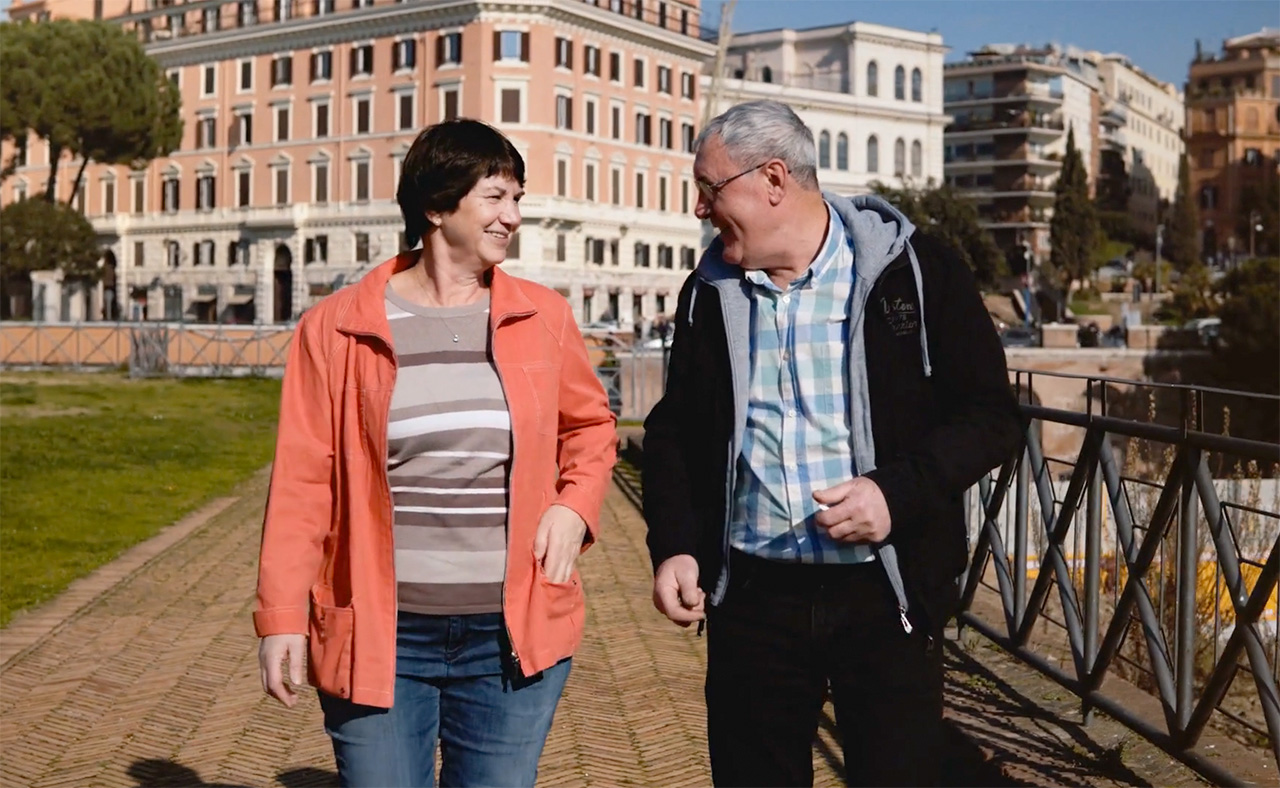
.
What to see and do in Rome and beyond in the Autumn
.
Autumn in Rome is synonymous with harvest season, making it a fantastic time to indulge in the city’s culinary delights. This period sees numerous food festivals and wine tastings that celebrate local produce and traditional dishes- there are indeed so many reasons to visit Rome in the fall. The flavors of freshly harvested grapes, chestnuts, truffles, and other seasonal specialties come to the forefront. Exploring the local markets, such as Campo de’ Fiori and Testaccio Market, provides an opportunity to taste and purchase these autumnal treats.
In addition to enjoying Rome itself, autumn is an excellent time to take day trips to the surrounding countryside. The Roman countryside, Tuscany, and Umbria are easily accessible from the city and offer breathtaking landscapes, historical towns, and a slower pace of life.
Wine tours from Rome are particularly popular during September and October, coinciding with the annual grape harvest season, known as Vendemmia. Visiting vineyards and participating in wine tastings during this period provides a deeper appreciation for Italy’s rich winemaking traditions.
.
.
.
Tips for Visiting Rome in the Autumn
.
While autumn is a lovely time to visit Rome, it’s essential to be prepared for occasional rain, especially in November. Packing an umbrella or a raincoat ensures you stay dry and comfortable during your explorations. Layered clothing is also advisable to accommodate the changing temperatures throughout the day. Mornings and evenings can be cool, while afternoons are often pleasantly warm.
Despite the thinning crowds compared to summer, Rome remains busy with fall travelers and cruisers, particularly in September and early November. Therefore, booking your hotels, tours, transfers, and tickets in advance is crucial to secure availability and avoid last-minute hassles.
Exploring Rome in autumn also means experiencing the local culture more intimately. The city’s cultural calendar is filled with various events, including film festivals, art exhibitions, and music concerts, offering a rich array of activities to enjoy. Attending these events provides a deeper connection to Rome’s vibrant arts scene and contemporary culture.
The combination of mild temperatures, fewer crowds, and beautiful autumn foliage creates an ideal setting for exploring the city and its surroundings. Whether you’re savoring seasonal dishes at a local trattoria, strolling through the picturesque Villa Borghese, taking a wine tour, or visiting the countryside, autumn provides a memorable and enriching Roman experience.
.
.
.
Winter in Rome (December to February)
.
Weather and Atmosphere in Rome in the winter
Winter in Rome is characterized by cooler temperatures, ranging from 40°F to 55°F (4°C to 13°C). While it may be off-season for tourism, this period has its unique charm, making it an excellent time to visit for those who prefer a quieter, more relaxed experience. The city’s iconic landmarks are often less crowded, allowing for a more intimate exploration. The atmosphere during the holiday season is particularly enchanting, as Rome dresses up in festive decorations, twinkling lights, and holiday markets that transform the city into a winter wonderland.
.
Christmas Traditions to Enjoy in Italy
During winter, Rome hosts several key events and activities that offer a rich cultural experience. One of the highlights is the Christmas markets, which are sometimes scattered throughout the city. The most famous one is in Piazza Navona, where you can find a delightful array of holiday treats, handmade gifts, and festive decorations. These markets provide a wonderful opportunity to experience local traditions, taste seasonal specialties like panettone and torrone, and soak up the festive atmosphere.
The Christmas Eve and New Year’s celebrations in Rome are truly spectacular. Vatican City becomes a focal point for these festivities, with the Pope’s Midnight Mass at St. Peter’s Basilica drawing thousands of pilgrims and visitors from around the world. This solemn and beautiful event is a profound experience, even for those who are not religious. The celebration of New Year’s Eve, or “La Festa di San Silvestro”, includes fireworks, concerts, and parties across the city, particularly around landmarks such as the Colosseum and the Roman Forum.
.
.
Tips for Visiting Rome in the winter
To make the most of your winter visit to Rome, it’s important to pack appropriately for the cooler weather. Warm clothing, including a good coat, hat, and gloves, is essential to stay comfortable during your explorations. Layering your clothes will help you adapt to the varying indoor and outdoor temperatures.
One of the significant advantages of visiting Rome in winter is the reduced number of tourists. This off-peak season means you can explore popular attractions without the usual crowds, allowing for a more relaxed and enjoyable experience. This is also an excellent time for photography, as the city’s landmarks are less crowded, and the winter light provides a softer, more diffuse quality for your photos.
.
.
Enjoy the indoors: Visit Museums and Churches in Rome
.
Winter is also an ideal time to focus on Rome’s indoor attractions. The city’s numerous museums, art galleries, and churches offer a warm respite from the cold. Spend your days exploring world-renowned collections in places like the Vatican Museums, the Capitoline Museums, and the Borghese Gallery. These institutions house some of the most important artworks and historical artifacts, providing a deep dive into Rome’s artistic and cultural heritage.
Additionally, winter is a great time to enjoy Rome’s culinary delights. The city’s restaurants and cafes are cozier and less crowded, making it easier to find a table at popular dining spots. Seasonal dishes, such as hearty pasta, soups, and roasted meats, are perfect for warming up after a day of sightseeing. Don’t miss the opportunity to try traditional winter treats like hot chocolate, chestnuts roasted on open fires, and festive pastries.
Winter in Rome offers a unique and captivating experience, blending the city’s historical grandeur with the cozy, festive charm of the holiday season. With fewer tourists, more comfortable sightseeing conditions, and a host of special events and activities, it’s an ideal time to discover the Eternal City. Whether you’re attending a midnight mass at St. Peter’s Basilica, browsing through the enchanting Christmas markets, or enjoying the quiet beauty of Rome’s winter landscape, your visit will be filled with unforgettable moments and discoveries.
.
Local Customs and Etiquette in Rome: What to Know
.
Greetings and the Italian Language
Italians are known for their warmth and friendliness. When meeting someone, a common greeting is a firm handshake accompanied by direct eye contact and a warm smile. In more familiar settings, Italians may greet each other with a light kiss on both cheeks, starting with the left. Learning a few basic Italian phrases can significantly enhance your interactions and show respect for the local culture.
Common phrases include “Buongiorno” (Good morning), “Buonasera” (Good evening), “Grazie” (Thank you), and “Prego” (You’re welcome). Using these phrases, even if your pronunciation isn’t perfect, will be appreciated and often met with a friendly response.
.
Dining in Rome
Dining is a cherished aspect of Italian culture, with meals often being leisurely affairs enjoyed with family and friends. When dining out, it’s customary to wait to be seated and to greet the staff with a polite “Buonasera” (Good evening). Unlike in some other cultures, Italians typically eat dinner later, with most restaurants opening for dinner around 7 PM.
When it comes to ordering, it’s respectful to take your time and enjoy the dining experience rather than rushing through the meal. Courses are usually served in a specific order: antipasto (appetizer), primo (first course, often pasta or risotto), secondo (second course, typically meat or fish), contorno (side dish), and dolce (dessert).
Tipping is appreciated but not obligatory; leaving a small amount or rounding up the bill is sufficient. If service was exceptional, a 10% tip is a generous gesture.
.
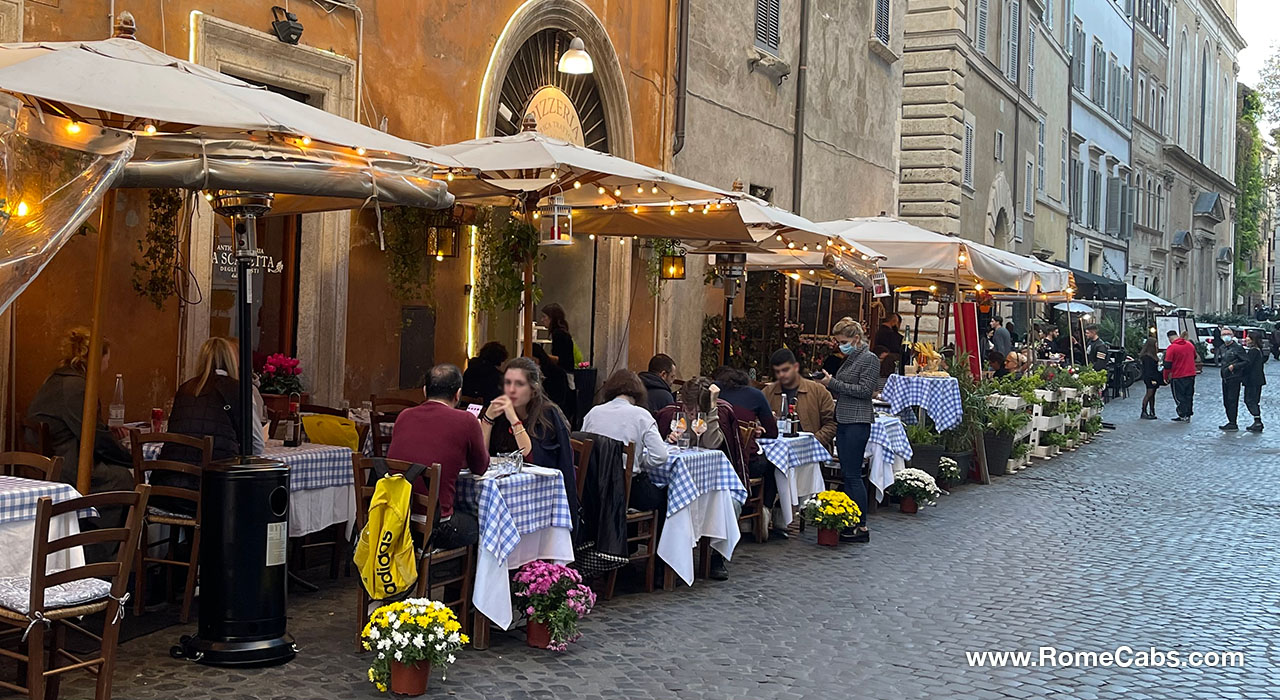
.
.
What to Wear and Dress Code for Visiting the Vatican and Churches in Rome, Italy
Romans take great pride in their appearance and tend to dress stylishly, favoring smart, well-put-together outfits even for casual outings. While casual attire is generally acceptable, dressing neatly and stylishly will help you blend in with the locals.
When visiting religious sites, such as churches and the Vatican, modest dress is required. This means covering your shoulders, midriff, and knees. Men should avoid wearing sleeveless shirts, and women should avoid shorts and short skirts. Bringing a scarf or shawl to cover up when needed is a good idea if you plan to visit these sites.
.
Rome Safety Tips: Staying Safe While Exploring Rome
.
Avoid Pickpocketing and Scams in Rome
.
First-time visitors to Rome may not think about safety tips such as avoiding pickpocketing and scams. Rome is a very safe city, but like many major tourist destinations, Rome also has its share of pickpockets, particularly in crowded areas like Termini Station, the Colosseum, and popular tourist spots such as the Trevi Fountain and Spanish Steps. Pickpocketing is also frequent on metros and buses due to the crowded conditions. To safeguard your valuables, consider the following:
Secure Your Valuables: Use a money belt or a cross-body bag with a secure zipper. Keep your bag in front of you and hold onto it, especially in crowded places.
Be Aware of Your Surroundings: Stay alert and aware of your environment. Avoid distractions like using your phone while navigating busy areas.
Avoid Carrying Large Sums of Cash: Instead, use credit or debit cards where possible and keep only small amounts of cash in an easily accessible pocket.
Scam Awareness: Be cautious of people offering unsolicited help or services, such as fake tour guides, overly friendly strangers offering you “gifts” of roses or bracelets, or others who may distract you while an accomplice attempts to steal your belongings.
.

.
.
Rome Traffic and Pedestrian Safety
.
Rome’s traffic can be chaotic, and drivers might not always yield to pedestrians. Here are some tips to navigate the streets safely:
Use Designated Crosswalks: Always cross at marked pedestrian crossings and wait for the green light when available.
Stay Vigilant: Look both ways before crossing, even on one-way streets. Make eye contact with drivers to ensure they see you.
Avoid Distractions: Don’t use your phone or other distractions while crossing streets. Stay focused on the traffic.
Transportation Safety: Only use licensed taxis or reputable ride-sharing services. If taking public transport, be aware of your surroundings and keep your belongings secure.
Night Safety: While Rome is generally safe, it’s best to avoid poorly lit or deserted areas late at night. Stick to well-traveled and well-lit streets, especially if you’re alone.
.
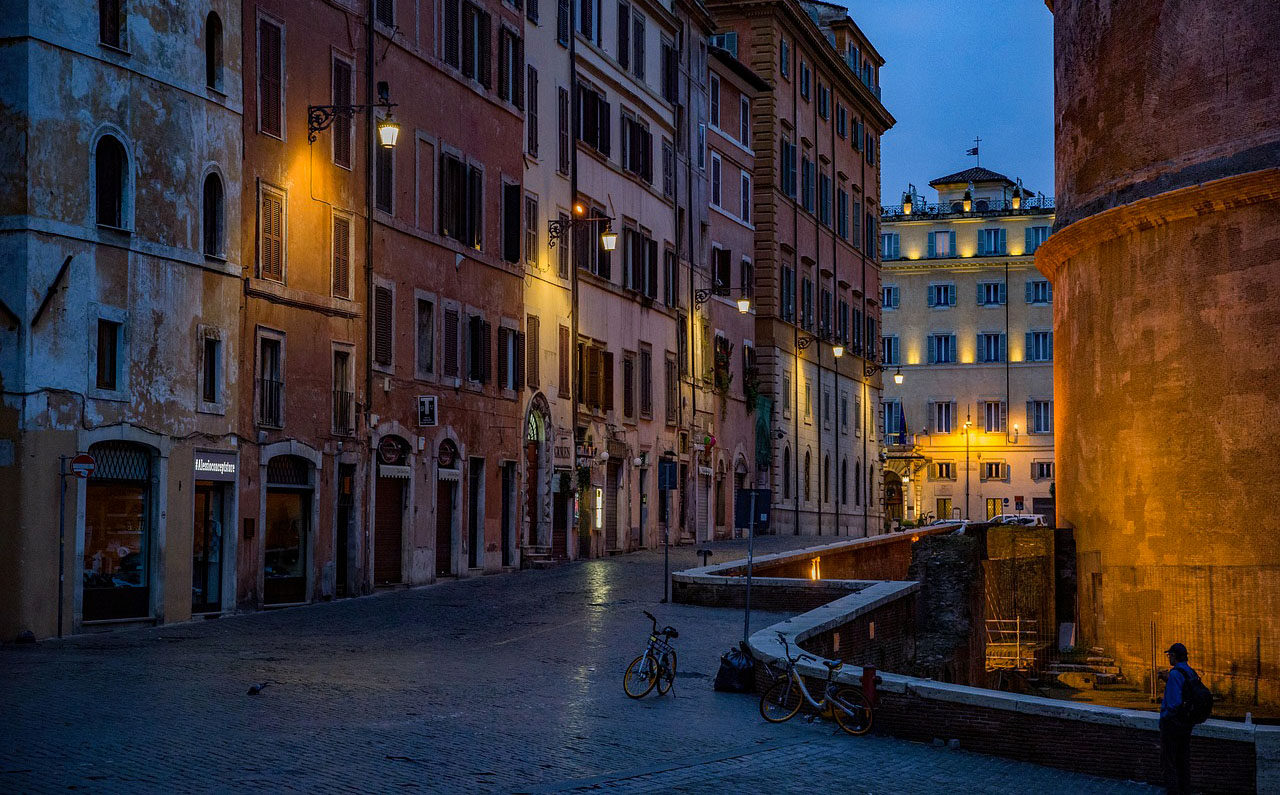
.
.
Jot Down Rome – Italy Emergency Numbers
.
Knowing the emergency numbers in Rome is crucial:
- 112: General emergencies (equivalent to 911 in the US).
- 113: Police.
- 118: Medical emergencies.
- 115: Fire department.
Save these numbers on your phone and familiarize yourself with the location of the nearest hospital or medical center to where you are staying.
.
Take Health Precautions on your trip to Italy
.
Taking care of your health while traveling is essential:
Stay Hydrated: Especially during the hot summer months, carry a reusable water bottle and refill it at the public drinking fountains (nasoni) scattered throughout the city.
Rest and Cool Down: Take breaks during the day to rest and cool down, particularly if you’re walking a lot.
Medications: If you have any medical conditions, carry necessary medications and a copy of your prescriptions. It’s also wise to have a basic first-aid kit for minor issues.
Travel Insurance: Ensure you have travel insurance that covers medical expenses, including emergencies and hospital visits.
.
Rome is a city that captures the hearts of its visitors with its rich history, stunning architecture, and vibrant culture. By planning ahead, understanding local customs, and staying mindful of safety, your first visit to Rome can be a smooth and memorable experience. Whether you’re wandering through ancient ruins, savoring delicious Italian cuisine, or simply soaking in the atmosphere of this timeless city, RomeCabs is here to help you navigate and enjoy every moment of your journey.
Buon viaggio!
.
* Find RomeCabs online also on:
RomeCabs Facebook: https://www.facebook.com/RomeCabsToursAndTransfers
RomeCabs Pinterest: https://www.pinterest.it/romecabs
RomeCabs Twitter: https://twitter.com/RomeCabs
RomeCabs Instagram: https://www.instagram.com/romecabs/
RomeCabs Flickr Photo Gallery: https://www.flickr.com/photos/romecabs/
.
.
.
.
.
.

